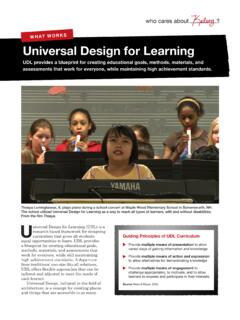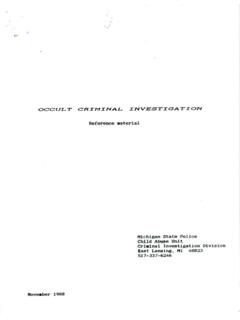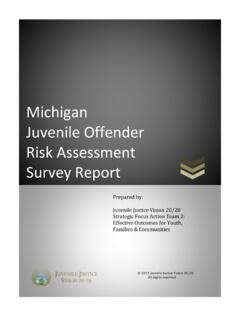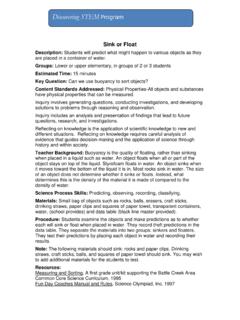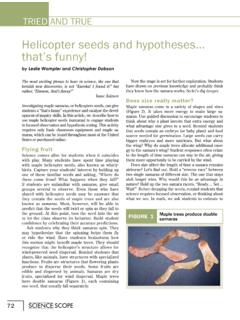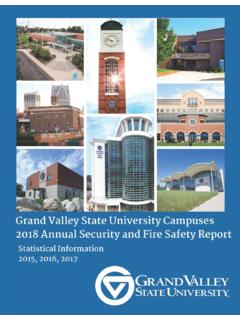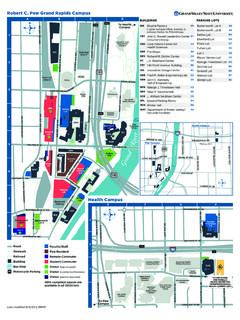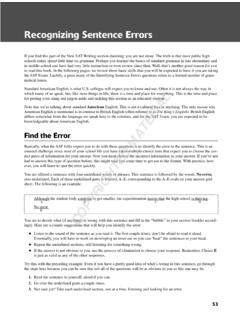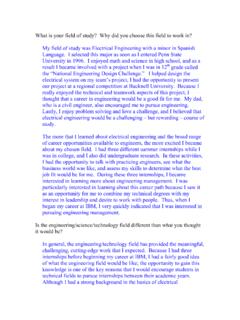Transcription of The One Minute Preceptor: 5 Microskills for One-On-One ...
1 The One Minute Preceptor: 5 Microskills for One-On-One Teaching Acknowledgements This monograph was developed by the MAHEC Office of Regional Primary Care Education, Asheville, North Carolina. It was developed with support from a HRSA Family Medicine Training Grant and the resulting materials are public domain. Introduction Health care providers face many challenges in the day to day pursuit of their careers, and those who choose to teach health professions students face the further challenge of efficiently and effectively providing teaching to these learners. No matter what type of learner resident, medical student, physicians assistant or nurse practitioner and no matter what their level of skill or training, the challenge of integrating teaching into your day to day routine remains. Fortunately tools and techniques have been developed to assist the preceptor.
2 A tested and valuable approach is the One- Minute Preceptor. Initially introduced as the Five-Step ` Microskills ' Model of Clinical Teaching (Neher, Gordon, Meyer, & Stevens, 1992), the One Minute Preceptor strategy has been taught and tested across the nation (Irby 1997a, 1997b; STFM, 1993) and has been welcomed by busy preceptors. The dissemination of this technique has been allowed and encouraged, and we are pleased to be able to present it to you as part of our Preceptor Development Program. At the end of this module you will be able to: 1. List the Steps of the One- Minute Preceptor model of clinical teaching. 2. Explain how each step fosters effective and efficient teaching. 3. Demonstrate understanding of the One- Minute Preceptor on a sample student presentation. 4. Integrate the One- Minute Preceptor model into your clinical teaching.
3 Making the Most of Teaching Time Much of clinical teaching involves the learner interviewing and examining a patient, and then presenting the information to the preceptor. This strategy is common both in the office and hospital setting. Studies have indicated that on average, these interactions take approximately 10 minutes and the time is divided into several different activities. (See Figure 1.) Much of the time is taken up by the presentation of the patient by the learner. Additional time is spent in questioning and clarifying the content of the presentation. As a result only about one Minute of time is actually spent in discussion and teaching. The One- Minute Preceptor approach allows the preceptor to take full advantage of the entire encounter in order to maximize the time available for teaching.
4 The teaching encounter will still take longer than a Minute but the time spent is more efficiently used and the teaching effectiveness is optimized. The Method The One- Minute Preceptor method consists of a number of skills that are employed in a stepwise fashion at the end of the learner's presentation. (See Table 1.) Each step is an individual teaching technique or tool, but when combined they form one integrated strategy for instruction in the health care setting. Table 1: The One- Minute Preceptor Method 1. Get a Commitment 2. Probe for Supporting Evidence 3. Reinforce What Was Done Well 4. Give Guidance About Errors and Omissions 5. Teach a General Principle 6. Conclusion An Example: Let us look at a sample presentation in order to help illustrate the steps of the One- Minute Preceptor model and their practical application.
5 You are working with student from a physician's assistant program who is in your office for their final six-week preceptorship before graduation. The student has just finished seeing a patient and is presenting to you in your office while the patient waits in the exam room. Student: just saw Mrs. Winkler. She is a 67-year-old woman who comes in today with a complaint of fever, cough and shortness of breath. As you may know, she has a 30-pack year smoking history and carries the diagnosis of mild COPD. She began getting sick about two days ago with what she thought was a cold but by yesterday she had more chest congestion and a temperature of 101 orally. She also noted that she was more winded than usual in her usual activities at home. Yesterday her cough was productive of whitish sputum but by this AM it had become yellow to tan with streaks of blood.
6 She noted chills this AM and her temp was and she called to come in. She has noted some increase in her wheezing but denies chest pain, except when she coughs. She is on Capoten and HCTZ for high blood pressure, and uses an albuterol inhaler and has been using this about every two hours since last evening. She has no allergies, got a flu shot this year and had the Pneumovax 2 years ago. On physical she is working hard at breathing with wheezes heard without a stethoscope. HEENT is basically normal but her lung exam reveals diffuse wheezes expiratory wheezes and decreased breath sounds in the area of the right middle " [Student pauses here waiting for your response] Step One: Get a Commitment At this point, there are many teaching techniques you could employ, but the One- Minute Preceptor method suggest that you get a commitment from the learner to get them to verbally commit to an aspect of the case.
7 The act of stating a commitment pushes the learner to move beyond their level of comfort and makes the teaching encounter more active and more personal. This can show respect for the learner and fosters an adult learning style. In this situation the learner stopped their presentation at the end of the physical exam. An appropriate question from the preceptor might be: What do you think is going on with this patient? This approach encourages the learner to further process the information they have gathered. You obtain important information on the learners clinical reasoning ability and the learner is given a higher sense of involvement and responsibility in the care of the patient. If the answer is correct , then there is the opportunity to reinforce a positive skill. If the response is incorrect, an important teaching opportunity has occurred and the impact of the teaching is likely to be greater since the learner has made the commitment.
8 Not all learners will stop at the same point in their presentation, but the preceptor can still get a commitment. Additional examples include: What other diagnoses would you consider in this setting? What laboratory tests do you think we should get? How do you think we should treat this patient? Do you think this patient needs to be hospitalized? Based on the history you obtained, what parts of the physical should we focus on? By selecting an appropriate question, the preceptor can take a learner at any stage and encourage them move them further along in their skills and to stretch beyond their current comfort level. Notice that questions used in getting a commitment do not simply gather further data about the case. The goal is to gain insight into the learner's reasoning. Questioning by the preceptor for specific data reveals the preceptor's thought process not the learner's.
9 The learner in the example above needs the opportunity to tell you their assessment of the patient data they have collected. Step Two: Probe for Supporting Evidence Now that you have a commitment from the learner, it is important to explore what the basis for their opinion was. The educational setting often rewards a lucky guess to the same degree as a well-reasoned, logical answer. In the clinical setting, it is important to determine that there is an adequate basis for the answer and to encourage an appropriate reasoning process. By the same token it is important to identify the lucky guess and to demonstrate the use of appropriate supporting evidence. Once the learner has made their commitment and looks to you for confirmation, you should resist the urge to pass immediate judgement on their response.
10 Instead, ask a question that seeks to understand the rationale for their answer. The question you ask will depend on how they have responded to your request for a commitment: What factors in the history and physical support your diagnosis? Why would you choose that particular medication? Why do you feel this patient should be hospitalized? Why do you feel it is important to do that part of the physical in this situation? There are significant benefits from using this step at this time. You are able to immediately gauge the strength of the evidence upon which the commitment was made. In addition, any faulty inferences or conclusions are apparent and can be corrected later. This step allows the preceptor to closely observe the vital skill of clinical reasoning and to assist the learner in improving and perfecting that skill.
